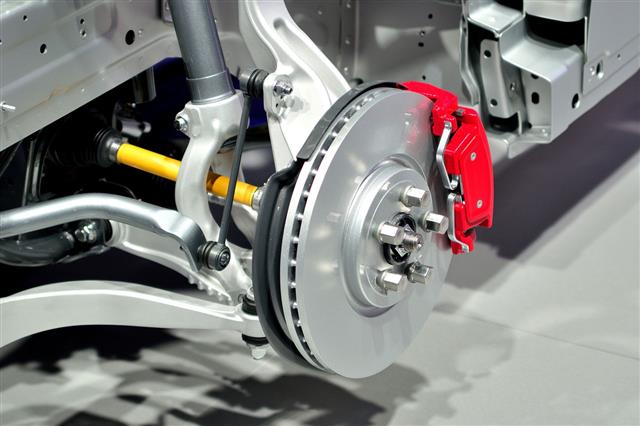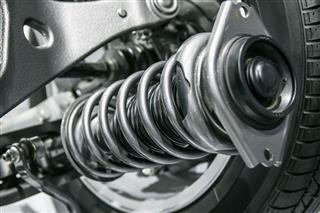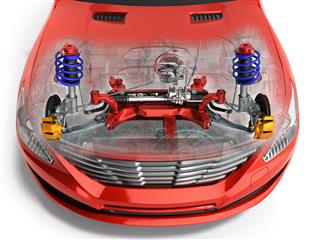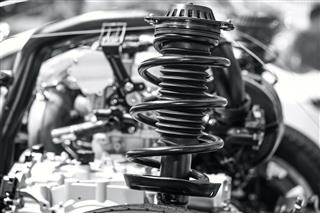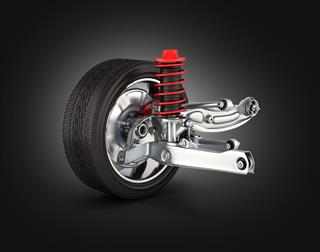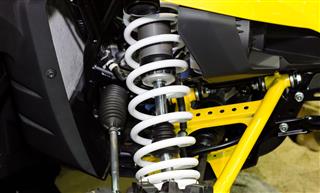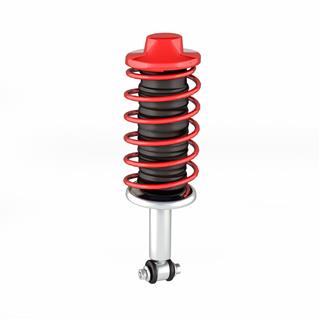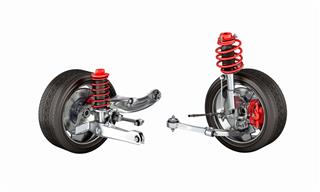
There is a good chance that your car has an independent front suspension system installed in it. What is this system, and what are its pros and cons? This WheelZine article will answer such queries.
Did You Know?
The most widely used front suspension system, especially in European cars, is the MacPherson strut, developed by Earle S. MacPherson of General Motors, back in 1947.
A vehicle’s suspension is perhaps the most important parameter for judging its performance. Think about it – what’s the use of having a car with hundreds of horses and thousands of liters under the hood, if you cannot control it. Also, unless your car can soak up those road-bumps, nobody is going to want to ride in it. Clearly therefore, it is most important that your vehicle has the right suspension system installed in it.
In present times, the independent front suspension system has become popular in many different types of vehicles. It has by and large replaced the old rigid axle suspension, which finds only limited and specific applications nowadays. In the following lines, we shall first find out what an independent suspension system means, and then discuss the advantages and disadvantages of the independent front suspension system.
What is an Independent Suspension?
The independent suspension system is a suspension setup in which each of the wheels on an axle is allowed to move freely (independent of the other one). This is different to the operation of the rigid axle suspension system, wherein, the movement of one wheel is dependent on the movement of the other one on the axle.
There are basically three different types of configurations of independent suspensions – independent front suspension, independent rear suspension, and fully independent system in which all four wheels have independent movements. Most modern cars employ the independent front suspension system.
Advantages of Independent Front Suspension
✔ Better Handling and Cornering
While cornering, a centrifugal force gets created in sprung vehicles. This leads to the formation of a roll couple that tilts the vehicle’s body outwards. This body-roll is countered by the resisting couple produced by the suspension springs. The magnitude of this resisting couple is given by the product of the spring’s reaction forces and the effective distance between them.
In the beam-axle type suspension system, the maximum distance between the springs depends on the width of the chassis where the supporting shackles are attached. However, in the case of independent suspension, which uses a transverse-arm linkage, the effective distance is equal to the wheel track of the vehicle, which is typically greater than the width of the chassis. This allows softer springs to be used without affecting the body roll. The soft springs react to even minute road deformations, cushioning the shock, which improves the ride quality of the vehicle.
✔ Better Stability and Steering
In rigid suspension, since both the springs are interconnected, when one wheel jogs or bounces, the entire axle tilts. This causes the opposing wheel to either tilt inwards or outwards, preventing it from continuing to roll in a straight line. This effect is termed as ‘bump steer’, and it can cause imbalance and decrease steering control. Furthermore, rigid axles are also less responsive during cornering, especially in heavy vehicles, leading to instability caused by forces transferred from wheel to wheel via the axle. Both these problems are taken care of by the design of an independent front suspension (IFS), as it imparts freedom to each wheel on the same axle, allowing it to respond independently to the road surface.
✔ More Ride Comfort
Ride comfort is a measure of how good a car feels to drive. It is a combination of a lot of different factors, including vibration level, noise, smoothness of the steering, etc. But most importantly, it depends on the degree to which the undulations of the road surface get transferred to the car’s body, and therefore to the passengers. Unlike the rigid axle suspension, the independent suspension system is able to perform well on most of these counts, thanks to the front wheel decoupling. This creates an isolation between the suspension and the chassis, thereby improving the overall stability of the vehicle.
✔ Lower Weight
The rigid axle suspension is a solid design, which is known for its simplicity and high strength. However, its strength comes at the cost of a larger size and higher mass. For the heavier, cruiser type vehicles of the 1940s, the rigid axle design was the perfect choice, and it still finds applications in big vehicles like trucks. However, it is no longer practical in the smaller and lighter vehicles of today, in which the IFS system is able to impart greater stability, maneuverability, and responsiveness.
Disadvantages of Independent Front Suspension
✘ Complex Design
In independent front suspension, since each wheel’s movement is made free of the other one on the axle, proper steering-wheel geometry and alignment becomes a critical part of the design. This makes the design process much more complex as compared to that of the rigid axle suspension.
✘ More Maintenance Cost
The complex steering and suspension linkage mechanism in an IFS system also makes it more expensive to maintain.
✘ More Wear and Tear
The independent motion of each wheel on an uneven surface results in a slight change in the wheel track. This increases tire scrub when a wheel bounces over a bump.
✘ Less Overall Strength
The rigid axle system has a beam interconnecting the two wheels. This beam provides it with additional strength. The independent front suspension system doesn’t have such a beam interconnection, and therefore, is comparatively weaker than the rigid axle suspension.
Thus, an independent front suspension system has its own set of advantages and disadvantages. For most cars, and light to medium weight vehicles, the advantages of this suspension system outweigh the disadvantages, and that is the reason why it has found such widespread applications in modern times.
